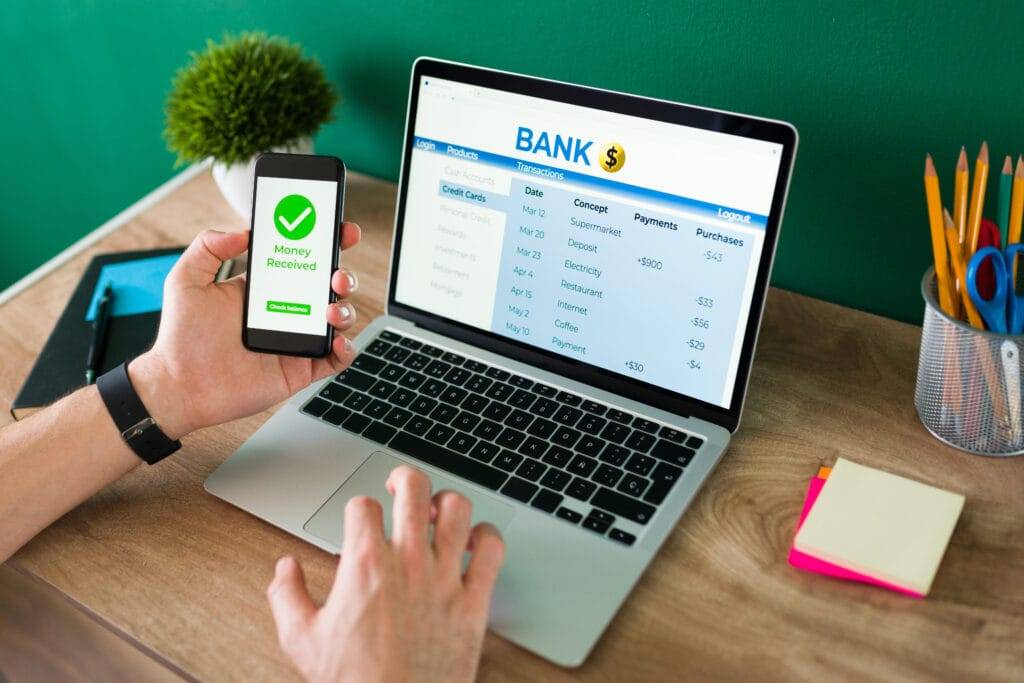
To enjoy full financial freedom, whether you are a student salaried employee or businessman, it is necessary for you have a bank account. A bank account can assist in both fund management and efficiency spending habits. A bank account alsoallows us to monitor our expenditures and provides all kinds financial services such as UPI, online funds transfer and Loan, etc.
Selecting the right bank account type can make or break your financial future. Most of the bank account types are personal savings accounts or a corporate current account as business owners. always remember, when choosing a bank account you should base it on its service conditions, location and the number of physical branches it has in your area–as near as possible to where you live; also, at minimum what kind (s) of digital functions can be accessed from this northbecause these are increasingly becoming needed for daily living needs with each passing day now that people just do nothave time from their work days anymore.
once you’ve chosen the bank and an account, gather up your paperwork. this includes:
- a valid identity proof (eg. Aadhaar Card, PAN Card, Passport etc.);
- proof of residence;
- 2 passport-sized photographs
- a PAN card
get the account opening form at the bank’s website or app or visit a bank branch to fill in and submit your address, provide the necessary documents, and have your kyc verified. Some banks offer high returns on deposits made in nomine
After your account-opening forms have been filled out and your documents collected, you must perform KYC verification. Credit cards with high rates of interest provide relief. One new thing is that now some banks have introduced video KYC for online customers.
Why Should You Open a Bank Account?
A bank is a place where we store our money below are the reasons mentioned:
| Benefit | Description |
|---|---|
| Security | Protects your money from theft and loss. |
| Convenience | Enables online transactions, bill payments, and money transfers. |
| Interest Earnings | Helps grow your savings with interest. |
| Credit Access | Essential for loans, credit cards, and overdraft facilities. |
| Investment Opportunities | Allows easy access to fixed deposits, RDs, and mutual funds. |
| International Transactions | Facilitates international purchases and remittances. |
| Financial Discipline | Helps you track and manage expenses better. |
| Government Benefits | Many subsidies and benefits are directly credited to bank accounts. |
| Cashback & Rewards | Some accounts offer rewards on digital transactions. |
Types of Bank Accounts in India:
| Type of Account | Best For | Key Features |
|---|---|---|
| Savings Account | Individuals | Earn interest, easy withdrawals, digital banking. |
| Current Account | Businesses & Freelancers | No withdrawal limits, high transaction volume. |
| Fixed Deposit (FD) Account | Investors | Higher interest, locked-in savings for a set period. |
| Recurring Deposit (RD) Account | Regular Savers | Monthly deposits with attractive interest rates. |
| NRI Account | Non-Resident Indians | Specialized accounts like NRE, NRO, and FCNR. |
| Salary Account | Salaried Professionals | Zero balance, linked to employer salary deposits. |
| Joint Account | Families & Partners | Shared access for multiple account holders. |
| Demat Account | Investors | Needed for trading and holding securities. |
Step-by-Step Guide to Open a Bank Account
Step 1: Choose the Right Bank
Selecting a bank depends on the following factors:
- Interest rates and fees.
- Minimum balance requirements (some banks offer zero-balance accounts).
- Branch and ATM locations.
- Customer service and online banking features.
Step 2: Gather Required Documents
| Document Type | Examples |
|---|---|
| Identity Proof | Aadhaar Card, Passport, Voter ID, PAN Card |
| Address Proof | Aadhaar Card, Utility Bill, Rental Agreement |
| PAN Card | Mandatory for tax-related transactions |
| Passport-size Photos | Usually 2-3 copies required |
| Income Proof (For Current Accounts) | Salary slips, Business registration |
| Signature Proof | Signature on a white paper for bank records |
Step 3: Fill Out the Application Form
- Visit the bank’s branch or website.
- Fill out the account opening form with accurate details.
- Attach scanned copies of the required documents (for online applications).
Step 4: Complete KYC Verification
- Banks require Know Your Customer (KYC) verification.
- Verification can be done in-person or via Video KYC for online applications.
- A bank official will verify your identity and documents.
Step 5: Deposit the Minimum Balance
- Some accounts require an initial deposit (₹500 to ₹10,000, depending on the bank).
- Zero-balance accounts like Jan Dhan Yojana and salary accounts do not require a minimum balance.
Final Thoughts
alternatively, if you have enough capital Salt payments have simplified the arcane rituals associated with banking in India. Moreover, this simplification has gained momentum the terminals nowadays are almost faceless: plug in your card or cellphone, flash your thumbprint or face to identify yourself, and the transaction is complete. It is no longer necessary to leave your living room. Many banks now have online steel plate you can open in minutes using their mobile apps as wellas apps from outside providers of finance- sometimes even within half-month! Students, salaried professional workerswith simple bank requirements and businessmen looking for a great place to keep large company funds700aae72
They have a broad range of offerings in India for customers with different needs, from zero-balance accounts to high-endaccounts with many features. Usually that consists of an online form which must be completed, then upload the KYC (Know Your Customer) documents and go through video KYC or OTP based verification. After that, your account is open! Now you can quickly start using digital banking features like UPI, mobile phones and net banking. Snail mailfinally has come to an end.
I just hope these instructions will be helpful. Please take your time deciding whether It’s OK not to decide. Put your questions in the comments. We will answer as many as possible!








Hello!
techfintrail.com, Thanks for keeping a thoughtful corner of the internet alive.
I recently published my ebooks and training videos on
https://www.hotelreceptionisttraining.com/
They feel like a standout resource for anyone interested in hospitality management studies. These ebooks and videos have already been welcomed and found very useful by students in Russia, the USA, France, the UK, Australia, Spain, and Vietnam—helping learners and professionals strengthen their real hotel reception skills. I believe visitors and readers here might also find them practical and inspiring.
Unlike many resources that stay only on theory, this ebook and training video set is closely connected to today’s hotel business. It comes with full step-by-step training videos that guide learners through real front desk guest service situations—showing exactly how to welcome, assist, and serve hotel guests in a professional way. That’s what makes these materials special: they combine academic knowledge with real practice.
With respect to the owners of techfintrail.com who keep this platform alive, I kindly ask to share this small contribution. For readers and visitors, these skills and interview tips can truly help anyone interested in becoming a hotel receptionist prepare with confidence and secure a good job at hotels and resorts worldwide. If found suitable, I’d be grateful for it to remain here so it can reach those who need it.
Why These Ebooks and Training Videos Are Special
They uniquely combine academic pathways such as a bachelor’s degree in hospitality management or a advanced hotel management course with very practical guidance on the duties of a front desk agent. They also cover the hotel front desk job description, and detailed hotel front desk tasks.
The materials go further by explaining the reservation systems in hotels, check-in and check-out procedures, guest relations, and dealing with guest complaints—covering nearly every situation that arises in the daily business of a front office operation.
Beyond theory, my ebooks and training videos connect the academic side of hospitality management studies with the real-life practice of hotel front desk duties.
– For students and readers: they bridge classroom study with career preparation, showing how hotel and management course theory link directly to front desk skills.
– For professionals and community visitors: they support career growth through questions for receptionist, with step-by-step questions to ask a receptionist in an interview. There’s also guidance on writing a strong receptionist job description for resume.
As someone who has taught resort management for nearly 30 years, I rarely see materials that balance the academic foundation with the day-to-day hotel front desk job requirements so effectively. This training not only teaches but also simulates real hotel reception challenges—making it as close to on-the-job learning as possible, while still providing structured guidance.
I hope the owners of techfintrail.com, and the readers/visitors of techfintrail.com, will support my ebooks and training videos so more people can access the information and gain the essential skills needed to become a professional hotel receptionist in any hotel or resort worldwide.
Appreciate you and your community.